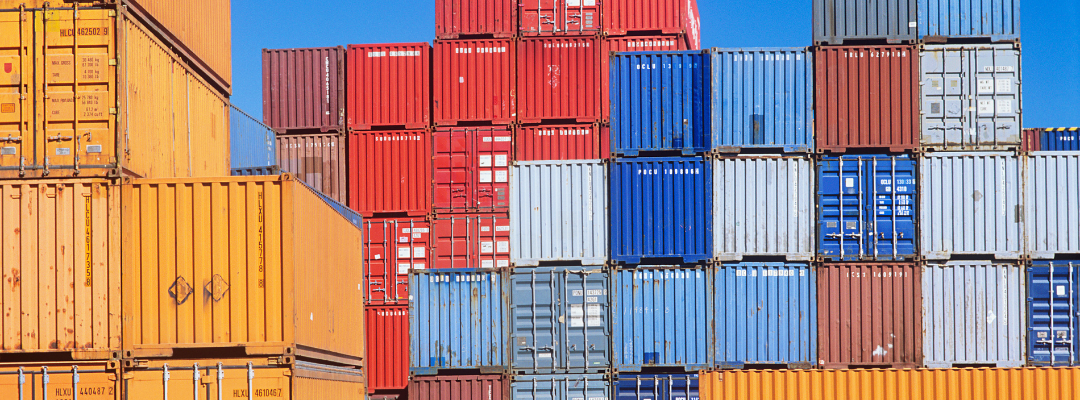The coronavirus pandemic had significant consequences for the U.S. economy, prompting the federal government to help households through stimulus payments. Coupled with deferred consumer spending, these payments created additional demand for durable goods, satisfied by a considerable expansion of imports from Asia. At the same time, U.S. ports suffer from infrastructure constraints, resulting in an unprecedented supply chain bottleneck in Fall 2021. In addition, because of increasing freight rates from Asia to the U.S., it became more lucrative for shipping companies to export empty containers instead of filling them with agricultural products. This development had adverse consequences for U.S. containerized agricultural exports from Southern ports.
Figure 1 shows estimated containerized agricultural export losses from May 2021 to January 2022 and across product groups for Southern ports. The counterfactual export losses for Southern ports were comparably low between June and August 2021, amounting to an average of $94 million per month. However, the adverse impact tripled to $343 million in September 2021, and the next three months saw a further increase in export losses. Although a slight decrease is observable in December 2021 and January 2022, the export losses remained elevated at $490 million per month.
The estimated export losses vary widely across agricultural product groups. Panel (B) shows that containerized cereals and dairy exports were above the counterfactual level, experiencing trade gains of $258 and $48 million, respectively. In contrast, meat products saw the most extensive exports losses, amounting to $640 million between May 2021 and January 2022. Containerized animal food exports trailed closely behind, experiencing export losses of about $400 million. Fat and oil products were also disrupted, recording a reduction in containerized trade by $310 million, followed by oilseeds ($282 million) and beverage products ($207 million). Comparatively, vegetables and fruit & nuts saw more minor trade destruction, down about $147 million in total.
Our counterfactual estimates show that Southern agricultural exporters faced considerable difficulties due to container shipping disruptions in 2021. Although U.S. policymakers spearheaded several initiatives to resolve port congestion and container shortages, our estimates show that these initiatives failed to ease supply chain disruptions in the short run. To reduce port congestion, the Biden administration decided in November 2021 to extend the operation hours of U.S. ports. In addition, the Bipartisan Infrastructure Deal was passed in the same month, promising to expand port infrastructure, which could benefit U.S. agricultural exporters, but these investments will take time to materialize.
Figure 1. Agricultural Export Losses for Southern ports between May 2021 and January 2022
(A) Containerized Agricultural Export Losses by Month

(B) Containerized Export Losses

Note. Estimates based on trade data and empirical approach by Steinbach (2022).
See: https://doi.org/10.1016/j.econlet.2022.110392
*Sandro Steinbach, Corresponding Author, Agricultural and Resource Economics, University of Connecticut, phone: 860-486-2836, email: sandro.steinbach@uconn.edu; Xiting Zhuang, Agricultural and Resource Economics, University of Connecticut, email: xiting.zhuang@uconn.edu. This work was supported by the National Institute of Food and Agriculture through the Agriculture and Food Research Initiative Award 2019-67023-29343. Any opinions, findings, conclusions, or recommendations expressed in this paper are those of the authors and do not necessarily reflect the views of the United States Department of Agriculture. We are thankful to seminar participants of the 2022 USDA ERS Brownbag Seminar for comments on an earlier version of this paper.
Steinbach, Sandro, and Xiting Zhuang. “Shipping Container Disruptions Cause Considerable Export Losses for Southern Ports.” Southern Ag Today 2(17.4). April 21, 2022. Permalink


